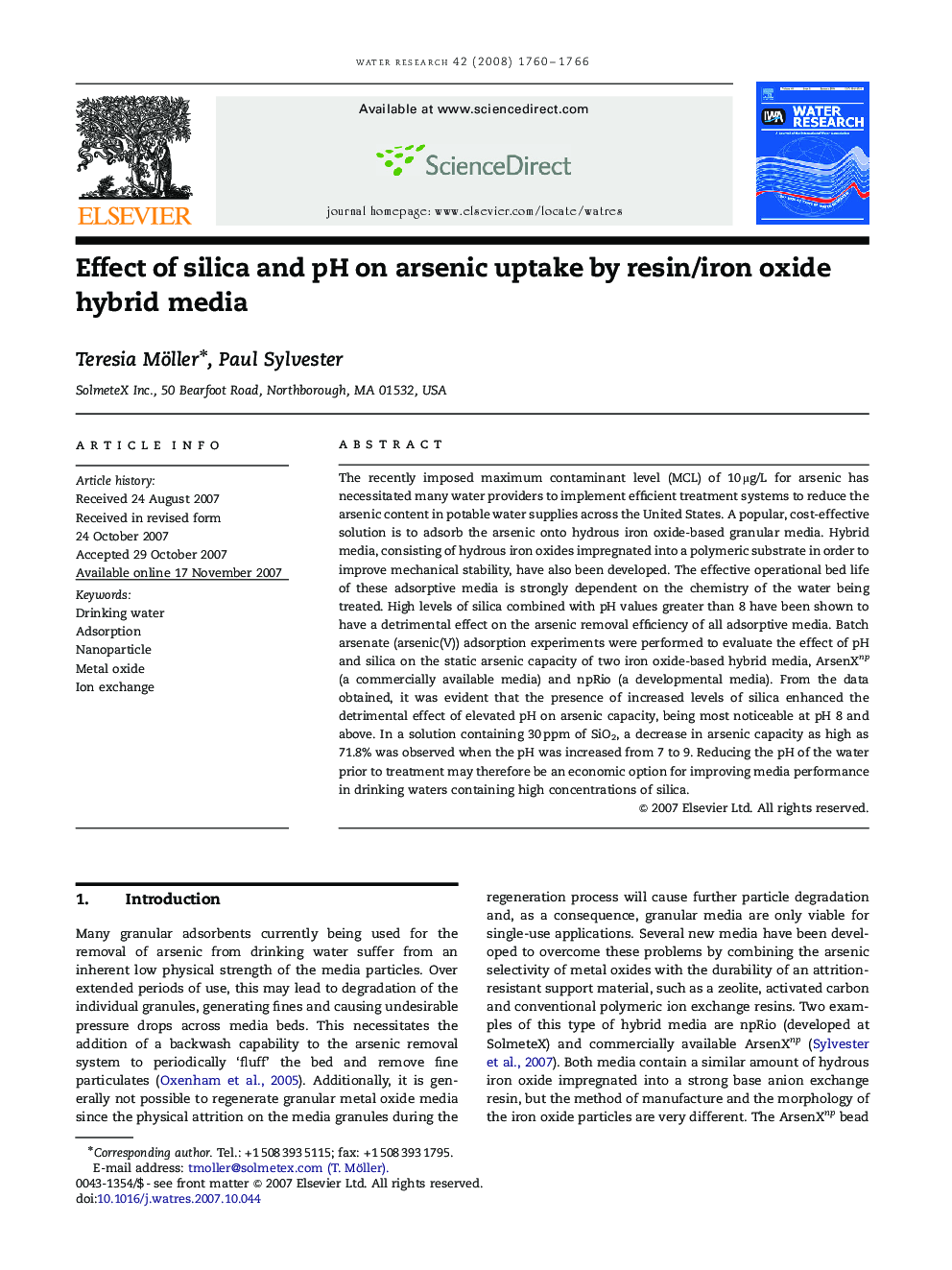| Article ID | Journal | Published Year | Pages | File Type |
|---|---|---|---|---|
| 4485064 | Water Research | 2008 | 7 Pages |
The recently imposed maximum contaminant level (MCL) of 10 μg/L for arsenic has necessitated many water providers to implement efficient treatment systems to reduce the arsenic content in potable water supplies across the United States. A popular, cost-effective solution is to adsorb the arsenic onto hydrous iron oxide-based granular media. Hybrid media, consisting of hydrous iron oxides impregnated into a polymeric substrate in order to improve mechanical stability, have also been developed. The effective operational bed life of these adsorptive media is strongly dependent on the chemistry of the water being treated. High levels of silica combined with pH values greater than 8 have been shown to have a detrimental effect on the arsenic removal efficiency of all adsorptive media. Batch arsenate (arsenic(V)) adsorption experiments were performed to evaluate the effect of pH and silica on the static arsenic capacity of two iron oxide-based hybrid media, ArsenXnp (a commercially available media) and npRio (a developmental media). From the data obtained, it was evident that the presence of increased levels of silica enhanced the detrimental effect of elevated pH on arsenic capacity, being most noticeable at pH 8 and above. In a solution containing 30 ppm of SiO2, a decrease in arsenic capacity as high as 71.8% was observed when the pH was increased from 7 to 9. Reducing the pH of the water prior to treatment may therefore be an economic option for improving media performance in drinking waters containing high concentrations of silica.
